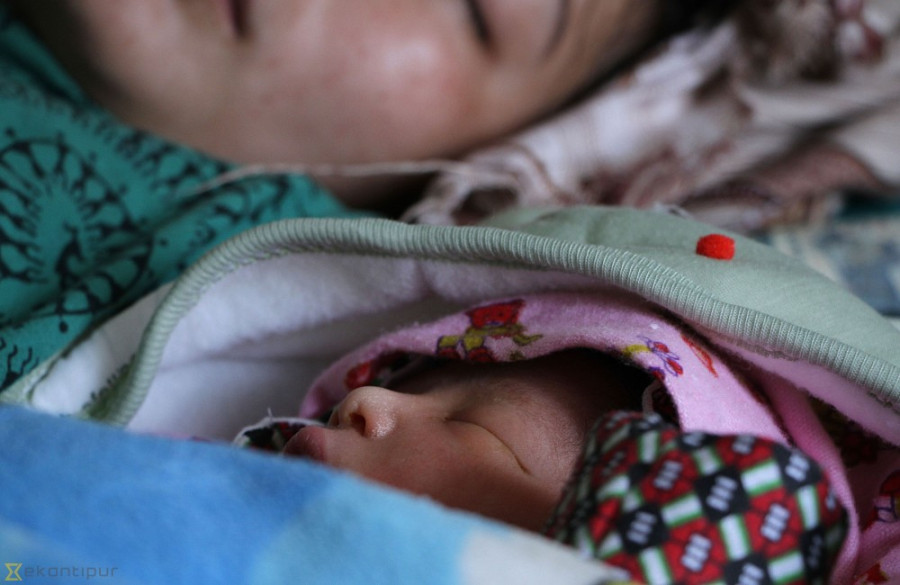Health
Health Ministry to distribute misoprostol to prevent postpartum haemorrhage
Authorities hope to reduce the existing maternal mortality rate by distributing medicine through female community health volunteers.
Arjun Poudel
The Family Welfare Division of the Department of Health Services is planning to distribute misoprostol, a medication used to treat postpartum bleeding, to new mothers through female community health volunteers.
Excessive bleeding after childbirth, also known as postpartum haemorrhage, is the most common factor leading to the death of new mothers in the country.
By distributing misoprostol to new mothers, health authority hopes to reduce the maternal death rate.
Misoprostol helps uterine contractions and have been used to prevent postpartum haemorrhage for a long time, officials at the division, said.
"We will distribute the life-saving medicine in eight remote districts this year," Dr Punya Poudel, focal person of Safe Motherhood Programme at the division, told the Post.
Female community health volunteers of Dolakha, Parsa, Gorkha, Solukhumbhu, Darchula, Gulmi, Dolpa and Dailekh districts will be provided with misoprostol in the first phase.
The maternal mortality rate in these districts is very high while the institutional delivery rate is woefully low.
Poudel said that female community health volunteers have been given the responsibility to distribute the medicine, as the volunteers are the first responders to pregnancy-related complications.
According to the Nepal Demographic Health Survey-2016, 239 women per 100,000 live births die during or after childbirth. The country has committed to reducing the maternal mortality rate to 125 per 100,000 births by 2020, which seems impossible in the present context, as no progress has been made so far since 2016.
Nepal reduced the maternal mortality rate from 539 in 1996 to 239 in 2016 for which the country received the Millennium Development Goal award.
Institutional delivery rates have not increased since the time of the survey and 41 percent pregnant women were found opting for home births which in effect put the newborn and the new mother at risk.
"The selected districts are highly remote, where access to health facilities is lower compared to other districts and people are less aware of the importance of seeking institutional delivery services," Dr Bhim Singh Tinkari, director at the division, said. "We are still struggling to bring women to health facilities before and after giving birth."
Doctors suggest postnatal care at least thrice after childbirth, but even those women who receive safe delivery services at health facilities do not seek postnatal care.
Of the total number of maternal deaths, 24 percent die during or after childbirth and 19 percent in the postnatal period. Postnatal care in health facilities is almost nil. Tinkari said that postpartum deaths are one of the major challenges in curbing maternal deaths.
Meanwhile, the division has also started hiring trained nurses to send to individual households to provide postnatal care to new mothers.
"All the efforts we made and are making are to bring down the existing maternal mortality rate and fulfil the country's commitment to the UN's Sustainable Development Goals' target."
Nepal has to reduce maternal mortality rate to 75 for every 100,000 births by 2030 to meet the target.




 16.12°C Kathmandu
16.12°C Kathmandu














